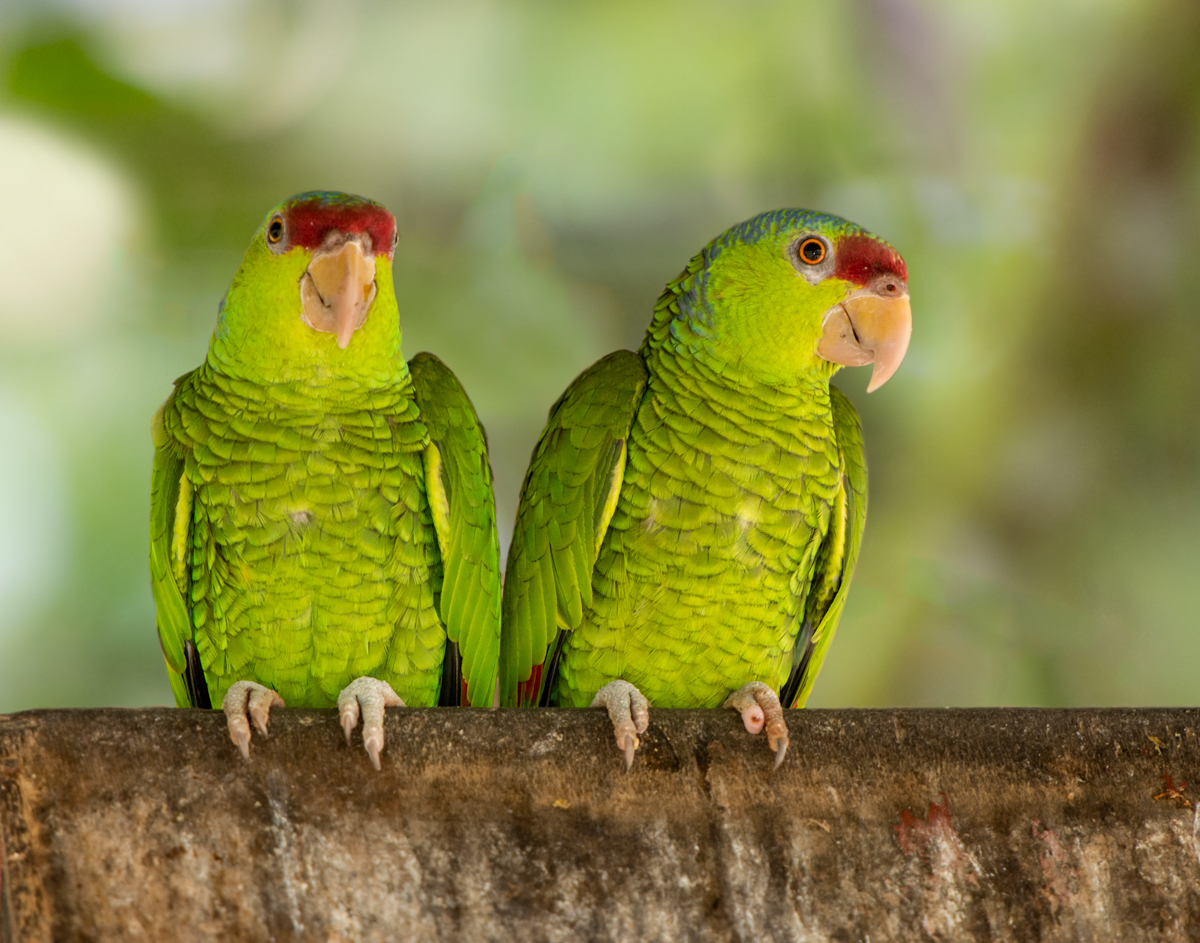
Covering 8% of the planet’s surface and comprising 28.4% of the land mass, The Americas and their associated islands make up most of the land in the planet’s western hemisphere, comprising what is known as the New World. It should come as no surprise that over half of the world’s bird species reside somewhere among the territories. Owen has visited much of The Americas, and today’s blog begins a series of visits across those lands. We start with three of the nations that can be found there: Mexico, Cuba, and Argentina.
Argentina is the second largest country in South America, and is home to around 970 species of bird with an additional 60 or so “hypothetical” species; that is, ones claimed to have been sighted there but no official record yet exists. Owen has visited this exceptionally diverse country and you can view his favourite shots here on his website; in the meantime, here’s just a select few.
Black-Faced Ibis
The Black-faced ibis is a bird currently listed as Least Concern by the IUCN, despite that fact that its numbers have all but vanished throughout the Peruvian part of its range. With the population scarcely seen there on the coast these days, many of the birds now only inhabit Chile and Argentina, where it lives from sea level to an altitude of around 2,500 metres. As you can see, the name derives from the black of the bill, throat-wattle and bare skin around the eyes. The rest of the head, neck and lower chest are buffish, and the crown and nape are a beautiful cinnamon, and those red legs complete the picture as it picks its way through the scrub and grasslands of its preferred habitat.
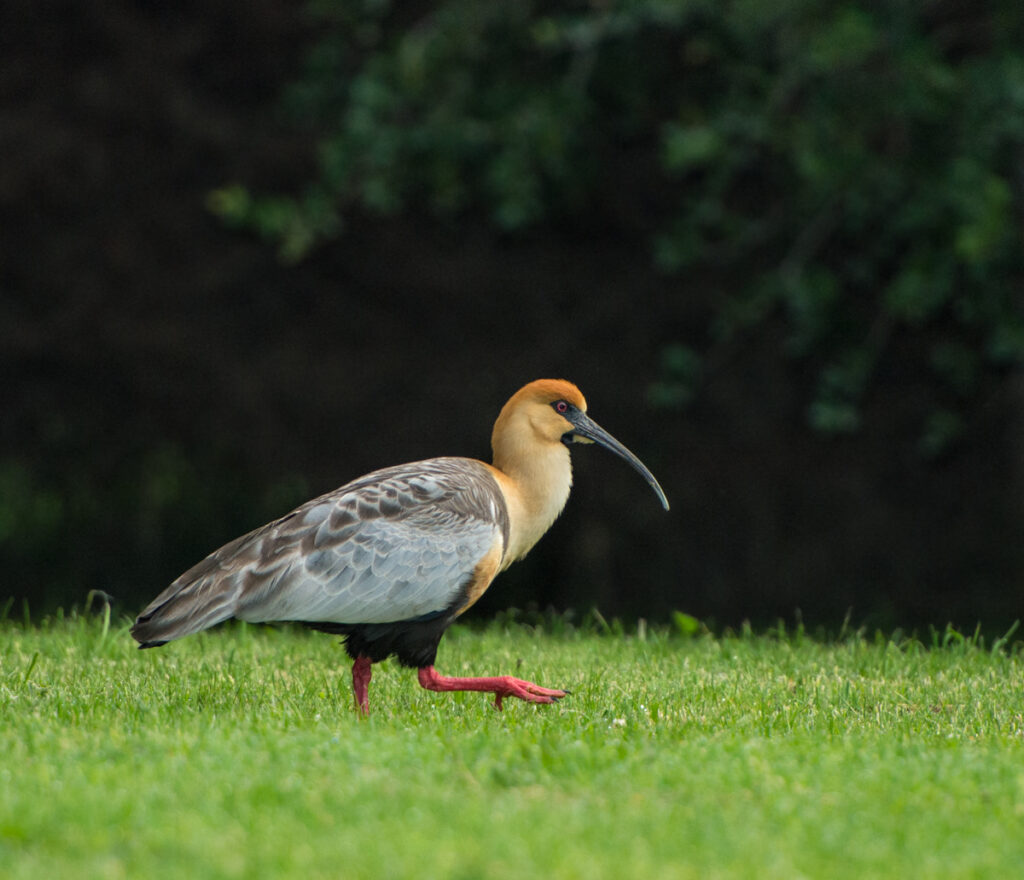
Torrent Duck
Nesting in small waterside cavities, the torrent duck is a resident breeder of the Andes, a powerful swimmer that can even dive in the white waters of the fast-flowing mountain rivers some 1,500 meters above sea level. The males sport those striking “go faster” black and white stripes along their heads and necks, tipped off by a vibrant red bill, and the females have orange underparts and throats, grey heads, and a lighter bill.
Moving north some 4,000km, Mexico dominates the southern portion of North America. Bordered by the Caribbean Sea, the Pacific Ocean and the Gulf of Mexico, the birdlife here is extraordinary, providing a base at various times of the year for around 1100 species. Greatly populated by migrating species, 10% are endemic.

Lilac-Crowned Parrot
One of these species is facing a tough time due to habitat loss, suffering around 20% losses to its population over recent years. Lilac-crowned parrots, also known as Finsch’s amazon, are chunky parrots who inhabit the Pacific coast of Mexico. Declared Vulnerable in 2006 then Endangered in 2014, this mostly green bird has a maroon forehead with a light blue-lilac neck, nape and crown.
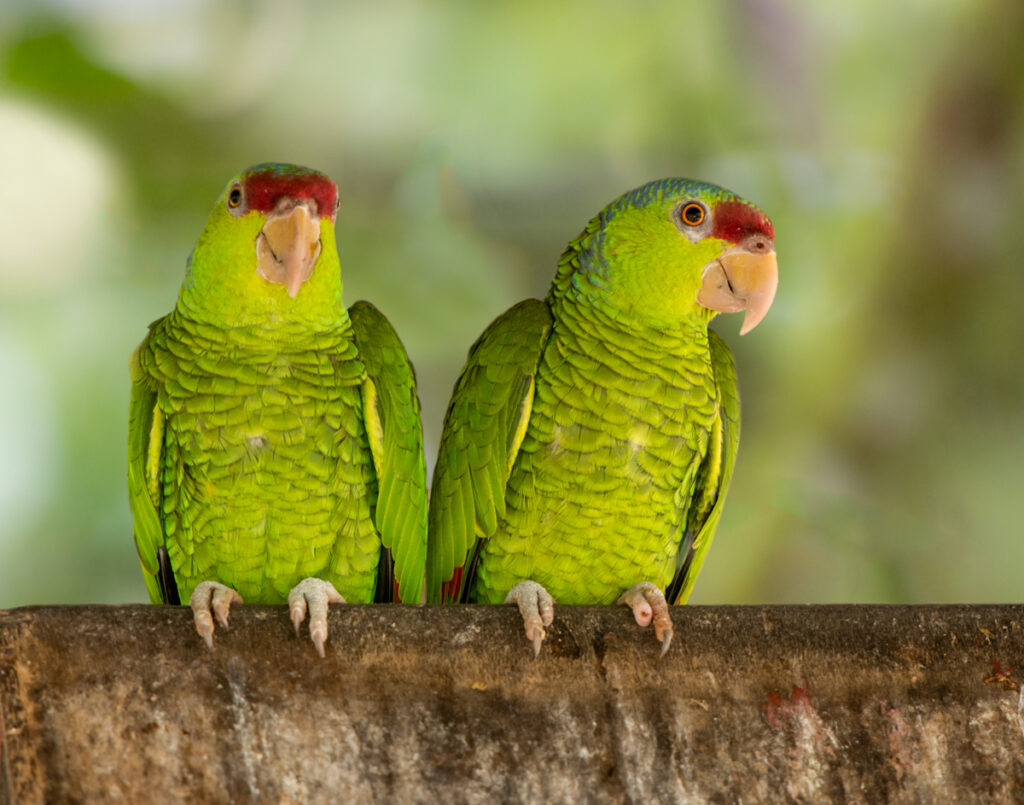
Yucatan Woodpecker
As the name suggests, the Yucatan woodpecker ranges across the entire Yucatan peninsula, inhabiting subtropical and tropical dry forests and shrubland. Males can be identified by the red crown that reaches from the eye to the nape, whereas the females’ crown is only situated toward the back of the head; both have striking bright yellow feathers surrounding the base of the bill. Similar in appearance to the red-crowned woodpecker, the species’ range does not overlap, with the latter residing much further south across Costa Rica, Panama and so on.
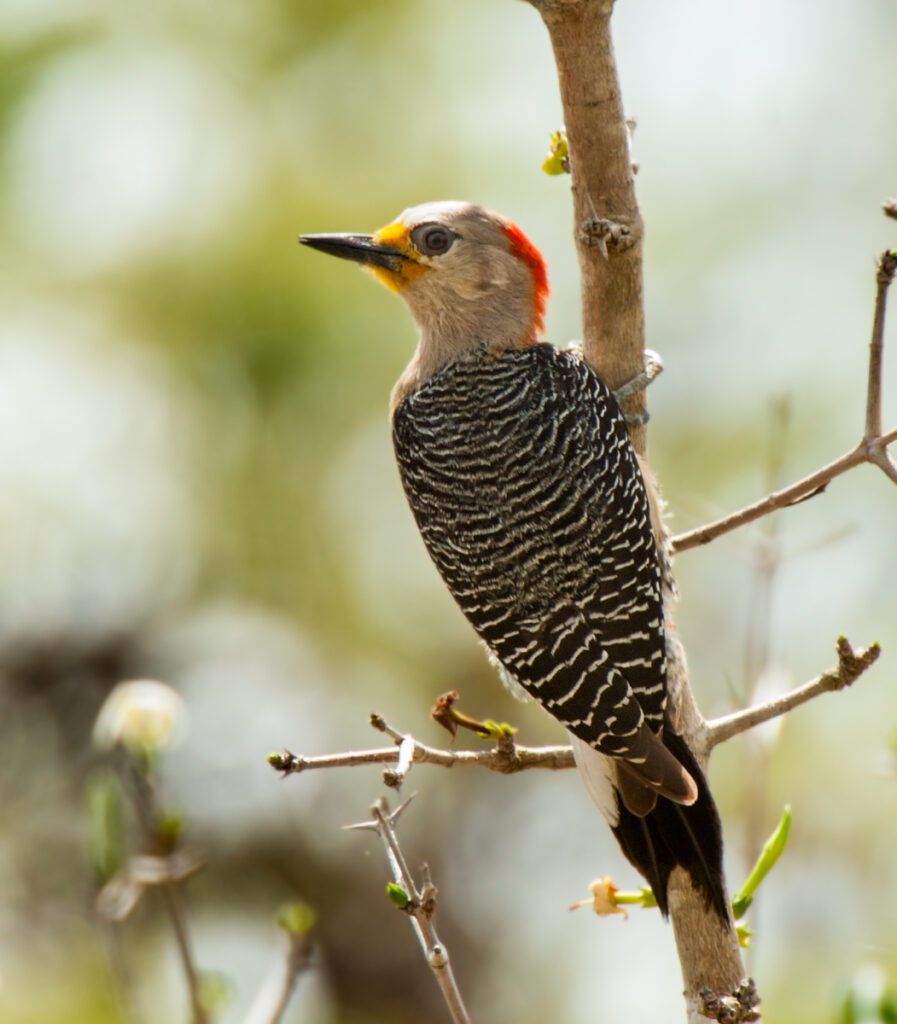
Cuban Trogron
The island of Cuba sits east of the Yucatan peninsula where the northern Caribbean Sea, Gulf of Mexico, and Atlantic Ocean meet. The Cuban Trogon has the distinction of being Cuba’s national bird, with many believing this honor was bestowed due to its blue, white, and red plumage, a nod to the nation’s flag. Cuban trogons also cannot survive in captivity, which some take to be symbolic of the people’s love for freedom. A stunning bird, listen out for its distinctive, low mournful call.
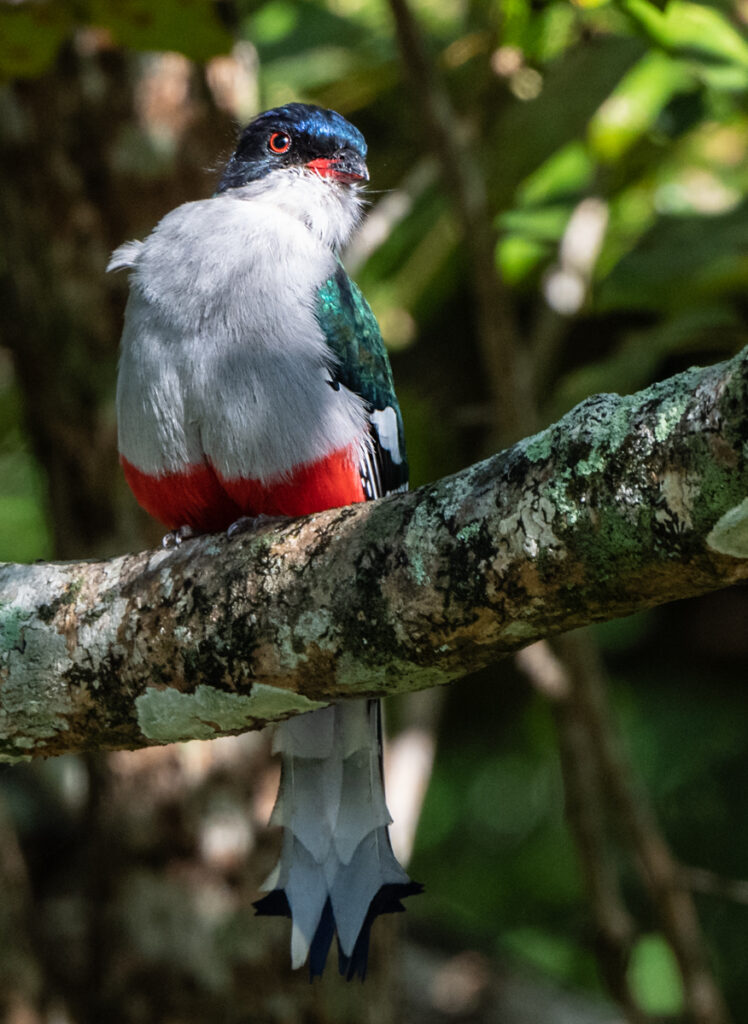
Bee Hummingbird
You can also find the world’s smallest living bird here in Cuba – the Bee hummingbird. The bluish green females are slightly larger than the males, weighing in at just 2.6g – less than a dime – and little over 6cm long. Bee hummingbirds can be found hovering by bromeliads edging deep forests, consuming up to half their body weight every day in insects, spiders, and nectar. They can live up to seven years in the wild, and their eggs are the size of coffee beans. Truly wondrous birds that never fail to amaze.
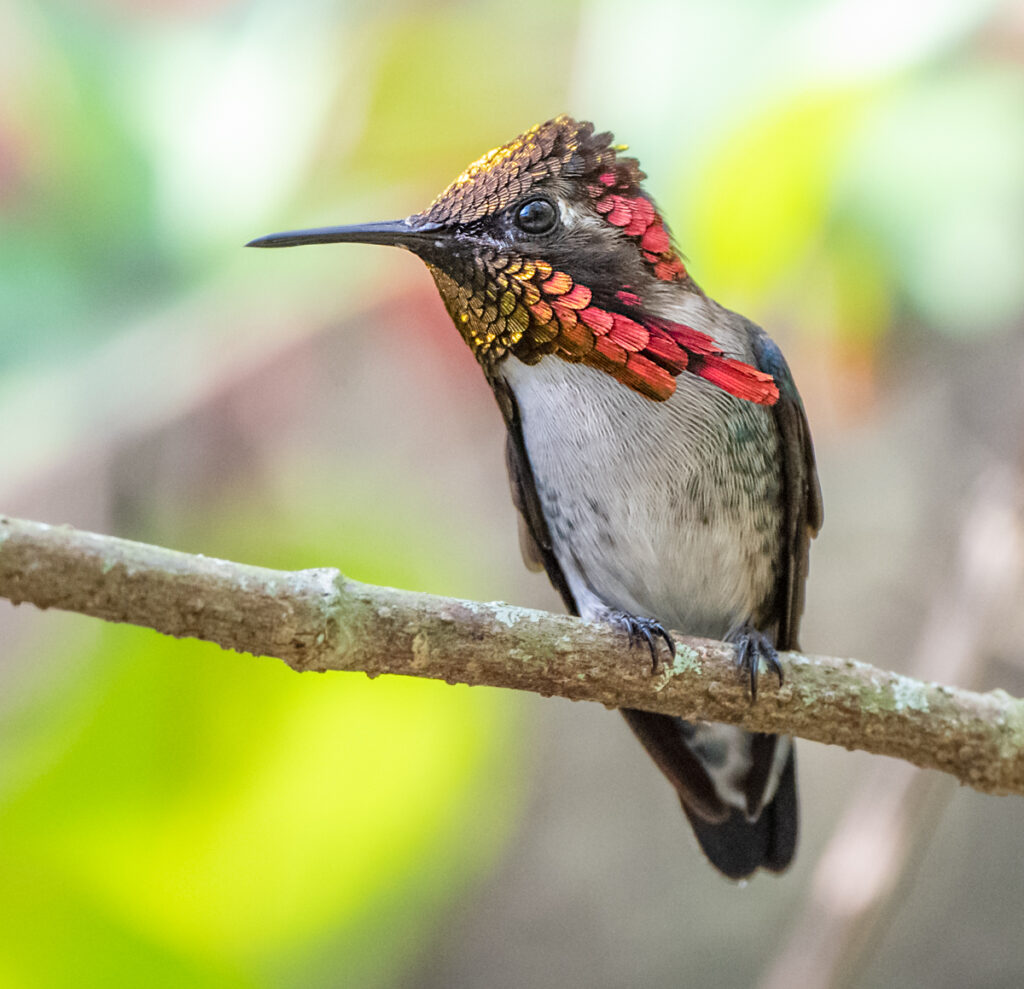
To view all of these birds complete with more information about them, simply click on BIRDS at the top menu and select the appropriate country from the dropdown, and click the yellow Search button. Happy viewing!


